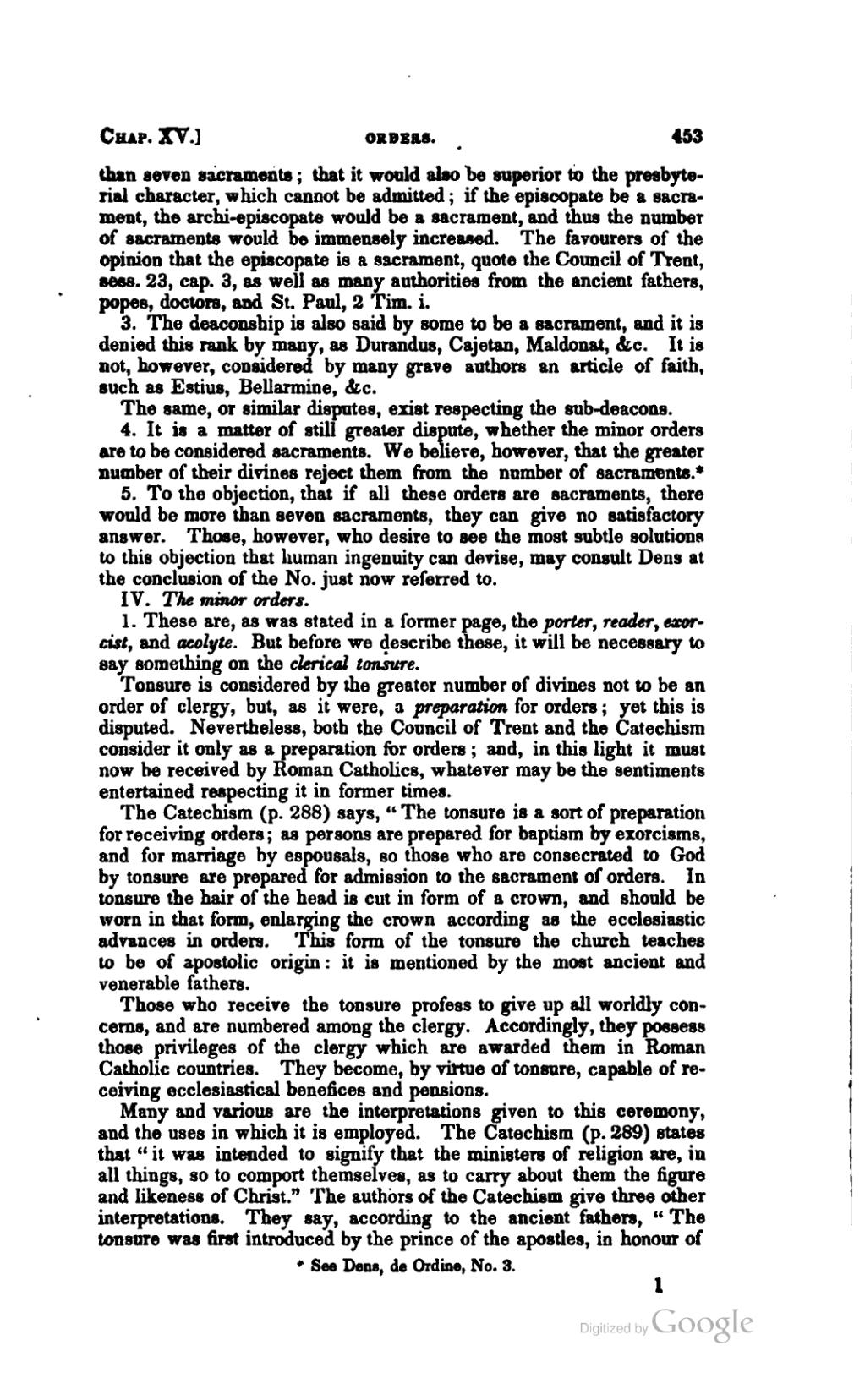CHIP. oRsns. 403 than seven sraments; that it would also be superior to the presbyte- rial character, which cannot be admitted; ff the Opiscopate be a sacra- ment, the archi-episcopate would be a sacrament, and thus the number of sacrament8 would be immensely increased. The favourers of the opinion that the episcopate is a sacrament, quote the Council of TTent, sees. 23, cap. 3, as well 88 many authorities from the ancient fathers, popes, doctors, and St. Paul, 2 Tim. i. 3. The deaconship is also said by some to be a sacrament, and it is denied this rank by many, us Durandus, Cajetan, Maidsnat, &c. It is not, however, considered by many grave authors an article of faith, such as Eatins, Bellarmine, &c. The same, or simitar dispute8, exist respecting the sub-deacons. still hather 4. It is a matter of greater dispute, w the minor orders are to be considered sacraments. We believe, however, th,?t the greater number of their divines reject them from the number of sacraments.* 5. To the objection, that if alJ these orders are sacraments, there would be more than seven sacraments, they can give no satisfactory answer. Those, however, who desire to see the most subde solutions to this objection that human ingenuity can devise, may consult Dens at the conclusion of the No. just now referred to. I�. Tb order#. 1. These are, as was stated in a former page, the por?, reader, c/st, and acoZyte. But before we d. escribe these, it will be necessary to say something on the cbricaZ tonsure. Tonsure is considered by the greater number of divines not to be an order of clergy, but, as it were, a prezmrat/on for orders; yet this is disputed. Nevertheless, both the Council of Trent and the (?atechism consider it only as a preparation fi)r orders; and, in this light it must now be received by Roman Catholics, whatever may be the sentiments entertained respecting it in former times. The Catechism (p. 288) says, "The tonsure is a sort of preparation for receiving orders; as persons are prepared for baptism by exorcisms, and for marriage by espousals, so those who are consecrated to by tonsure are prepared for admission to the sacrament of orders. In tonsure the hair of the head is cut in form of a crown, and should be worn in that form, enlarging the crown according tm the ecclesiastic advances in orders. This form of the tonsure the church teaches to be of apostolic origin: it is mentioned by the most ancient and venerable fathers. Those who receive the tonsure profess to give up all worldly con- cema, and are numbered among the clergy. Accordingly, they possess those privileges of the clergy which are awarded them in Roman Catholic countries. They become, by vi?e of tonsure, capable of re- ceiving ecclesiastical benefices and pensions. Many and various are the interpretations given to this ceremony, and the uses in which it is employed. The Catechism (p. 9.89) states that "it was intended to signify that the ministors of religion are, in all things, so to comport themselves, as to carry about them the ?ree r and likeness of Christ." The suthbrs of the C?atechism give three interpretations. They say, according to the ancient fathers, "The tonsme was first introduced by the prince of the aposdes, in honour of
- See Dens, de Ordino, No. 3.
t
�
